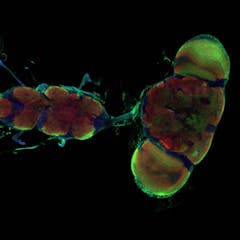
Articles on Quick reads
Displaying 441 - 460 of 1003 articles

DNA has been storing vast amounts of biological information for billions of years. Researchers are working to harness DNA for archiving data. A new method uses light to simplify the process.

New research shows that consumers are more likely to choose a plant-based meat option if they’re informed of their social benefits – or the environmental costs of beef consumption.

Chronic absenteeism is a pressing issue in high-poverty schools, but research suggests that serving students breakfast during class can help keep kids in school.

Until the late 1800s, moments of widespread high-risk financial gambling weren’t considered manias but the results of individual actors, who bore responsibility for the disastrous results.

Polls have consistently found robust support for this benefit, with a growing share of the public approving of paid time off for dads.

This finding was a surprise, since consumers actually seem to think liberals will provide better service.

The US Census Bureau has announced which states will gain and lose representation in Congress as a result of the 2020 census. Here’s how it makes the calculations.

Many studies conducted in recent years tie lower poverty rates for children to better health and higher pay when they grow up.

Long distances often preclude families in the Motor City from sending their kids to the best schools in the area, new research shows.

Researchers consider how friendships that bridge across social class – “cross-class friendships” – contribute to middle school academic achievement differences based on level of parents’ education.

Using the incredible wealth of fossil data and a modern ecological theory, researchers estimated population density for the extinct apex predator.

Even when the economy is strong, these young adults face economic hardship.

During economic downturns, local governments tend to cut spending on libraries, even as the need for their services grows.

Complementarianism became central to evangelical belief in response to the feminist movement of the 1970s when many Christians came to champion women’s equality.

Adaptable neurons are tied to learning and memory but also to neurological disorders. By studying fruit flies, researchers found a mechanism that controls neuroplasticity.

The demand was there.

Half of LGBTQ participants in a recent study experienced discrimination, insults, bullying or abuse while playing, watching or talking about sports.

Not all free college programs are the same. New research finds that eligibility requirements and other features influence outcomes.

Our biggest evolutionary advantages are an ability to walk on two legs and our big brains.

A parent’s or grandparent’s stressful experiences change how their offspring behave. And it turns out that moms’ experiences produce different changes in kids than dads’.
